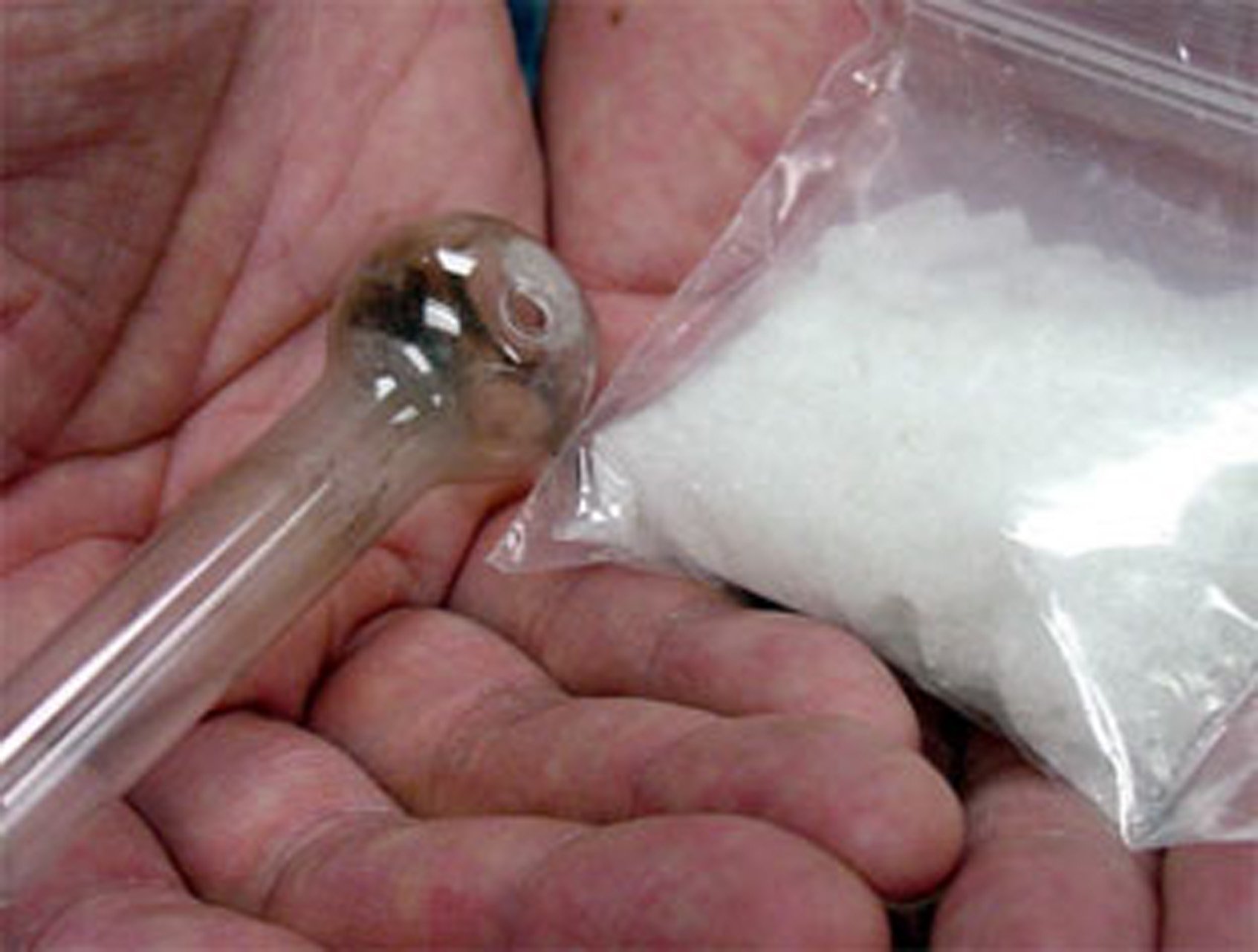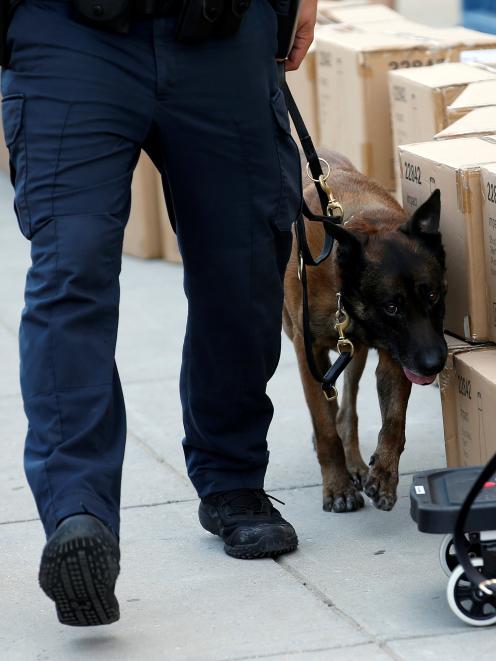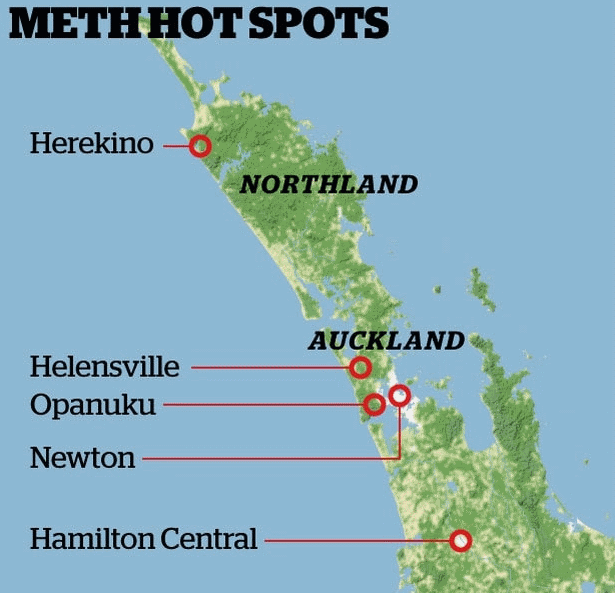
Canada has emerged as the leading source of pure methamphetamine to New Zealand.
New figures from Customs obtained under the Official Information Act reveal that 49.6kg of methamphetamine has been intercepted from Canada in the past six months alone - compared to just 0.47kg from there last year and 5.12kg in 2015.
China has typically held the top spot with 314kg being seized in 2016 - but just 1.02kg has been intercepted at the border from there so far this year.
More of the illicit drug has been coming from Mexico (79.74kg) and Hong Kong (38.31kg).
The changing nature of New Zealand's P trade, the rise in large drug seizures - and how readily available the drug is - has driven Customs to place more of a focus abroad.
Customs has posted nine officers offshore, some in recent months - in Bangkok, Beijing, Brussels, Canberra, Hong Kong and two in Washington DC - one of which is based at the International Targeting Centre.
Customs liaison officer Paul Smith was posted to Beijing in September 2013, at a time when China was of the greatest concern.
Smith told Herald Focus that his role covers China, but also South Korea, Japan and until recently Hong Kong - a posting that's been taken up by another officer, Roger Batten.
He points to the work done by Customs with China's Government to regulate Contac NT - a Chinese cold and flu medicine brand that P cooks in New Zealand are importing in large amounts - as a significant milestone.
"What we found was that pseudoephedrine then phased out as a main precursor and that's been replaced by ephedrine as a precursor.
"In New Zealand we're still getting a mixture of the finished product ... and we also intercept the precursors to manufacture methamphetamine."

New Focus
Smith says Customs has recently had to change tack in its approach.
"A few years ago, our focus was managing the border at the border. But now, our position's shifted so we actually do border management at the point of origin.
"Our strategy is to disrupt the supply chain of the methamphetamine and really go after the syndicates at the point of origin. So to do that we have to have a close relationship with the Chinese officials that engage in that activity as well."
Smith says he's been involved in some of the recent large joint Customs-Police meth busts, including Operation Winchester.
"It's a good example of how everyday routine work here in China comes to fruition. In that particular operation, we noted a Hong Kong national was going to New Zealand as a tourist.
"We were suspicious of his ticketing and so we did some background checks and we decided to actually monitor the activities of that particular person.
"Once they'd arrived in New Zealand, they set up an import company and we monitored those imports over a period of 16 months.
He says checks over that time confirmed their suspicions and that eventually led to 176kg of P being found in October last year, concealed inside container doors.
Smith says one of the challenges facing authorities is that ties between Asian organised crime groups and New Zealand gangs have strengthened.
"Asian gangs working in New Zealand ... essentially they're a business and they're exporting a product to New Zealand to sell.
"They don't have a preference, I don't believe, in any single New Zealand gang. They would deal with any gang to distribute their product. They will really look at any criminal organisation in New Zealand to use as part of their network.
He says China is a main source of P but big quantities of it are coming from Canada, Mexico and the US too.
"We're getting a lot of drugs at the point of importation but I think the most effective thing we can actually do is attack it at the source of origin.
Multi-national effort
"It's a multi-agency and it's a multi-national effort ... to really go after the syndicates at the point, so really we're going after the syndicates in China ... or whatever country they've been exported from."
Smith gives his personal view of how much of a problem he thinks P is: "I would regard it as a threat to our national security.
"I think it's that serious because of the harm it does to the community. I think it's something that we can't lessen our efforts to combat P on. It's a responsibility of everyone in New Zealand to do their bit."
Smith says New Zealand is more exposed than ever.
"I think to some extent, having a small population has sort of protected us to some extent.
"But with globalisation of trade and people movements ... [those] sort of natural barriers have lessened to some extent. So we're experiencing what the rest of the world has had for a longer time than us."

Five of New Zealand's meth cooking hotspots
Five areas in the North Island have been identified as "hot-spots" where a P lab is more likely to be found.
University of Auckland researchers looked at the prevalence and geographical spread of where the illegal drug was being made.
In the study, Helensville, Herekino (in the Far North), Hamilton Central, Opanuku (in West Auckland) and Newton (in Central Auckland) were identified as "hot-spots".
Doctors Daniel Exeter and David Newcombe had gathered and mapped out police data of clandestine meth lab seizures (2004 to 2009).
They analysed this further in light of an area's demographic features and found in three of these areas the residents tended to be younger, earned less, had higher levels of deprivation and it was a more rural area.
However, the researchers, from the University's School of Population Health, said these socio-economic characteristics were not as visible in both Hamilton and Helensville.
Exeter said this suggested there were other unknown factors at play.
"There's no single group of determinants or causes that we can attribute to an environment that is a meth lab production hub," he said. "Meth, and meth production, knows no bounds."
The research titled; The geography of methamphetamine manufacture in New Zealand between 2004 and 2009, showed the majority of clandestine meth labs were found in a private residence - accounting for 808 (76.5%) of 1056 seizures carried out in 2004 to 2009.
More recent police data obtained by the researchers showed this figure had almost halved within the subsequent five years to 561 - with 362 (57%) occurring at a residential home.
"For instance, a national clandestine methamphetamine laboratory registry accessible to the public may be beneficial to potential home owners and renters who want to ensure their families are protected from exposure to methamphetamine contaminated properties."
One Hamilton landlord, who didn't want to be identified, had experienced first-hand the costly impact of a meth-contaminated property.
He only found out meth had been in the Frankton house when he went to sell last year - but due to exclusions in his insurance policy was unable to claim on damages.
The landlord was unable to prove conclusively it had been used as a lab, but said the level of contamination in one room was consistent with those that had been.
"I was gutted when I found out the house was contaminated," he said. "But I thought I should have insurance and I will just get it cleaned up and back on the market, good as gold."
But one year on the house, which had an asking price of $329,000 remained vacant and was for sale "as is, where is".
Few acceptable offers had been made.
"I had one of $80,000, I didn't know if it was a joke."
So to improve his chances at a sale, he is forging ahead with decontaminating the property, at a cost of around $10,000 this week.
He also has to get a new kitchen, six new ceilings, a new stove, eight new walls, replace the insulation in the roof, all of the doors, door handles and light switches.
-By Carla Penman and NZ Herald












